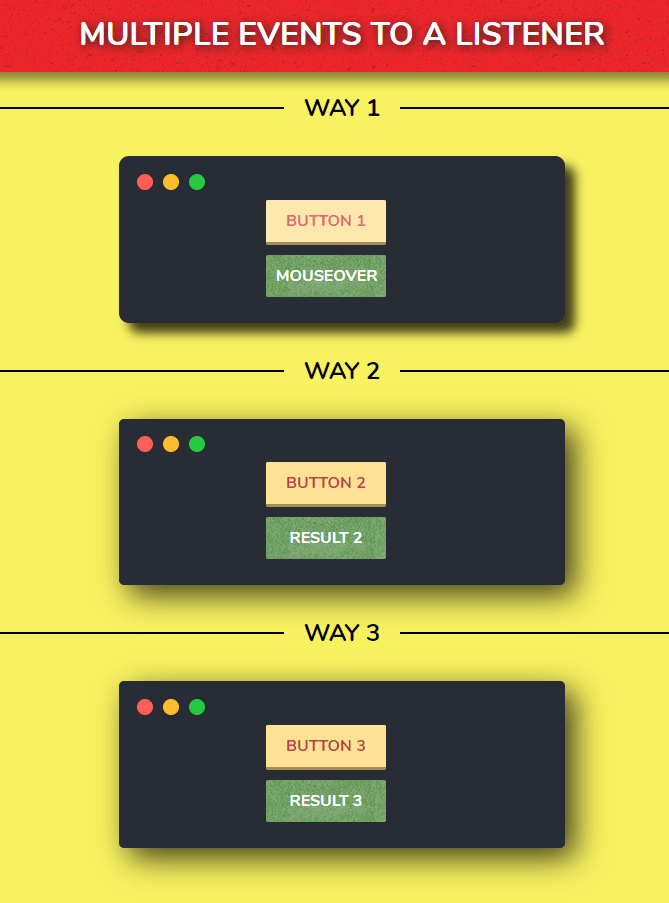

Next, we created an image tag with src and alt attributes. The classList property is used to add, remove, and toggle CSS classes on an element.

Add event listener in pug template how to#

Don't miss a moment with The Replay, a curated newsletter from LogRocket.
Add event listener in pug template code#
As a result, the event handler code won’t work. In JavaScript, attaching event handlers on an element that is not yet created or does not exist on the page will throw an error. For example: when a user clicks on the submit button to submit a form while a user plays or pauses a video, when a user presses a particular key on the keyboard, or when a user copies content from a web page. Introductionīefore we dive into how to attach event handlers to dynamically created JavaScript elements, it’s important that we understand JavaScript events and how they work.Īccording to MDN web docs, events are actions or occurrences that happen in the system you are programming, which the system tells you about so you can respond to them in some way if you want to. In this article, we’ll look at how to dynamically create JavaScript elements and how to attach event handlers to the dynamically created JavaScript elements. How to dynamically create JavaScript elements with event handlers In my spare time, I contribute to open source projects. I am also passionate about web accessibility and building communities. There may be third-party scripts that are harming your page's scrolling performance, but these aren't listed in your Lighthouse report.Amarachi Amaechi Follow I am a frontend developer with a passion for designing clean and intuitive applications for the web and an eye for design with a user-driven approach to development. Lighthouse filters out listeners from different hosts because you probably don't have control over these scripts.

How the Lighthouse passive event listener audit fails.


 0 kommentar(er)
0 kommentar(er)
